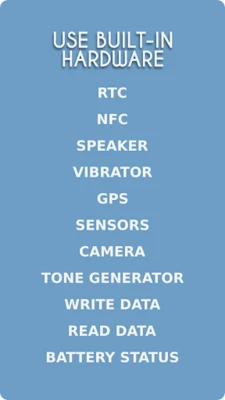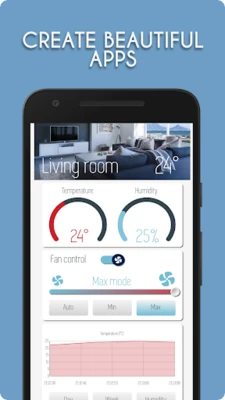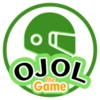GUI-O:GUI for embedded devices
- 5.0 RATINGS
- 1.00MB DOWNLOADS
- 4+ AGE
About this app
-
Name GUI-O:GUI for embedded devices
-
Category GENERAL
-
Price Free
-
Safety 100% Safe
-
Version 1.0.89
-
Update Feb 12,2025



In the realm of embedded systems, user interfaces have traditionally been minimalistic, often limited to basic LED indicators or simple button controls. However, with the advent of more powerful processors and advancements in display technologies, the need for intuitive and visually appealing graphical user interfaces (GUIs) on embedded devices has become increasingly apparent. Enter GUI-O, a cutting-edge GUI solution specifically designed for embedded devices.
GUI-O stands out as a comprehensive and versatile tool that enables developers to create sophisticated and responsive user interfaces for a wide range of embedded applications. Whether it's for industrial controls, automotive infotainment systems, or consumer electronics, GUI-O offers a robust platform to design, develop, and deploy intuitive GUIs tailored to the unique requirements of each device.
One of the key strengths of GUI-O lies in its modular design. The software is built around a flexible architecture that allows developers to easily integrate various components such as buttons, sliders, dials, and screens, all while maintaining a seamless user experience. This modular approach not only simplifies the development process but also enhances scalability, enabling the GUI to adapt as the embedded system evolves.
Moreover, GUI-O is optimized for performance and resource efficiency. It is designed to run smoothly even on devices with limited processing power and memory, ensuring that the user interface remains responsive without compromising the overall system performance. This is particularly crucial in environments where reliability and real-time responsiveness are paramount.
Another notable feature of GUI-O is its support for customization. Developers can tailor the GUI to match the branding and aesthetic preferences of their clients. From color schemes and fonts to animations and transitions, GUI-O provides extensive options for personalization, allowing each application to have a unique visual identity.
In terms of development tools, GUI-O comes with a comprehensive suite of software that simplifies the design and implementation process. The integrated development environment (IDE) offers drag-and-drop functionality, making it accessible even to developers with limited GUI design experience. Additionally, the software includes debugging and simulation tools, enabling developers to test and refine their designs before deployment.
GUI-O also emphasizes compatibility, ensuring seamless integration with a variety of hardware platforms and operating systems. This broad compatibility makes it an ideal choice for developers working on diverse embedded projects, from ARM-based microcontrollers to more complex systems running Linux or RTOS.
In conclusion, GUI-O represents a significant leap forward in the realm of GUI development for embedded devices. With its modular design, performance optimization, customization options, comprehensive development tools, and broad compatibility, it empowers developers to create sophisticated and responsive user interfaces that enhance the functionality and user experience of embedded systems. As the demand for intuitive and visually appealing GUIs continues to grow, GUI-O stands ready to meet the challenges of the future.





